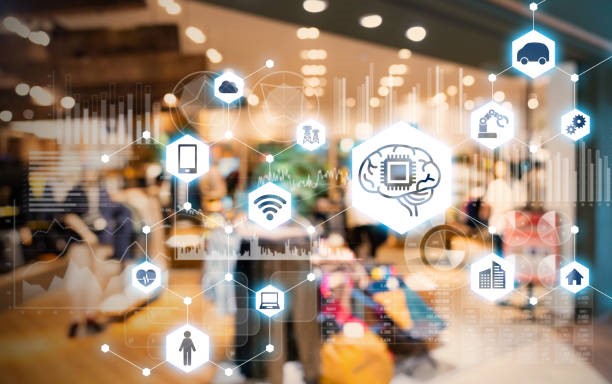
Written by Adam Hartley, Head of Content at Spreckley.
The global spread of COVID-19 has hit traditional retailers hard in 2020, with many of the UK’s high streets and town centres transformed into almost-no-go zones over the spring and summer lockdown period.
Conventional product-based consumer and lifestyle PR has been almost decimated in many sectors, particularly at the luxury and aspirational end of the market, as the pandemic saw millions of workers furloughed and more households tighten their belts in response to the uncertainty.
However, while the future for the British high street looks bleak as the pandemic continues to loom large over traditional bricks-and-mortar retail, online and omnichannel retailers are adopting new retail technologies faster than ever before.
E-commerce is driving development in new retail tech
Innovation in customer experience (CX), business resilience and continuity, scalability and future-proofing, and constantly improving delivery logistics in a ‘shopping-by-proxy’ world: these are the key trends that are driving developments in new retail technologies.
The boost in online and mobile retail caused by COVID-19 is unsurprising, yet the actual scale of the impact on the retail industry is clear from the latest market stats coming out of the Centre for Retail Research (CRR), which confirms that e-commerce is by far the fastest growing segment of the retail market in Europe and North America.
Combined e-commerce sales in Western Europe, for example, were £152.3 billion in 2015, £224.43 billion in 2019 and, taking into account the boost given by the lockdown of non-essential stores earlier this year, are predicted to equal £294.19 billion by the end 2020.
In layperson’s terms, this means that e-commerce sales have nearly doubled in Western Europe in the last five years alone.
“What the coronavirus pandemic has done is to bring forward the higher levels of online sales that we expected in 2021 (or 2025 in some cases) to 2020, but we expect online sales to dip in 2021 to a combined figure of £281.131bn (down -4.4%),” reported the CRR in July 2020. “Sales should rise in in 2022 as economic growth produces more consumer spending and the normally higher growth rate of e-commerce will drive greater revenues.”
Communicating retail tech innovation effectively
So what does all of this mean for retail technology PR? The overall market trend over the next five to ten years foresees an almost constant growth in online retail and e-commerce. And that’s even allowing for a slight dip in e-commerce growth in 2021 (providing, god forbid, that our high streets and bricks-and-mortar retailers don’t face another year of the pandemic!).
Most importantly, the impact that COVID-19 has had on customer expectations cannot be understated. Retailers are more focused than ever on developing new ways of using consumer data to better understand their customers’ needs, in order to deliver the best customer experience (CX) possible, from the point of purchase and all the way through to the moment of delivery.
Truly effective retail technology PR has to understand both the macro-level market changes (such as those outlined above) impacting on a client’s particular retail tech offering – whether it be an e-commerce platform, a new CX or payments innovation, a new development in logistics and delivery or any other retail tech innovation – as well as understanding clear, concise and compelling ways in which to communicate in clear, jargon-free language the business benefits of any new retail tech.
The fact is this: Online and digital technologies have and will fundamentally continue to change the ways in which we shop over the coming decade. And the pandemic has only served to accelerate this process. Competition in retail tech is fierce - from global omnichannel retail data or third party logistics providers through to supply chain management specialists and innovators in the customer experience (CX) sphere – which means that success is more dependent than ever before upon a brand’s reputation amongst industry peers, competitors, customers and consumers alike.
Communicating the consumer and business benefits of retail technologies in clear, concise and in compelling ways is no small task, as the world of tech (and retail tech, in particular) thrives on jargon and acronyms, many of which may well be meaningless to a retailer’s customer, supplier or buyer. Retail tech innovations may well be driven by the latest technological innovations in areas such as artificial intelligence (AI), augmented reality (AR), machine learning (ML) and more. Crafting narratives about how these innovations change, impact and improve a customer’s life or a supplier’s business in acronym-free English is perhaps one of the biggest challenges ahead for retail tech PRs.
